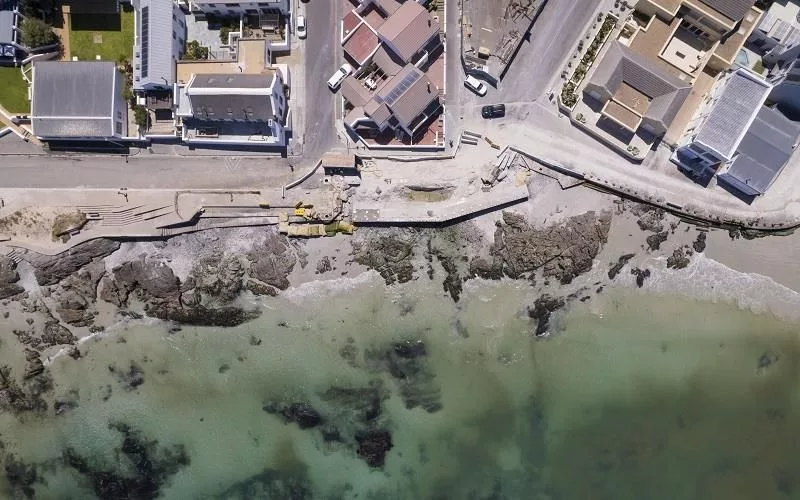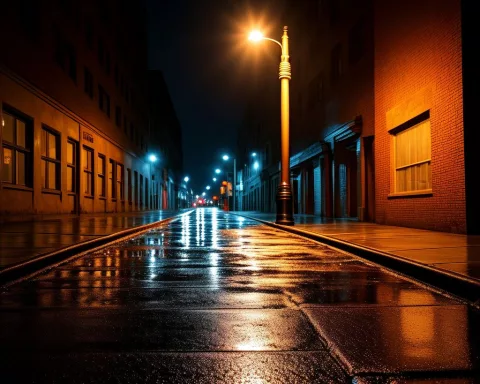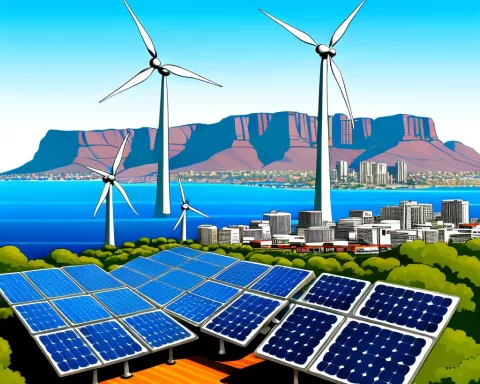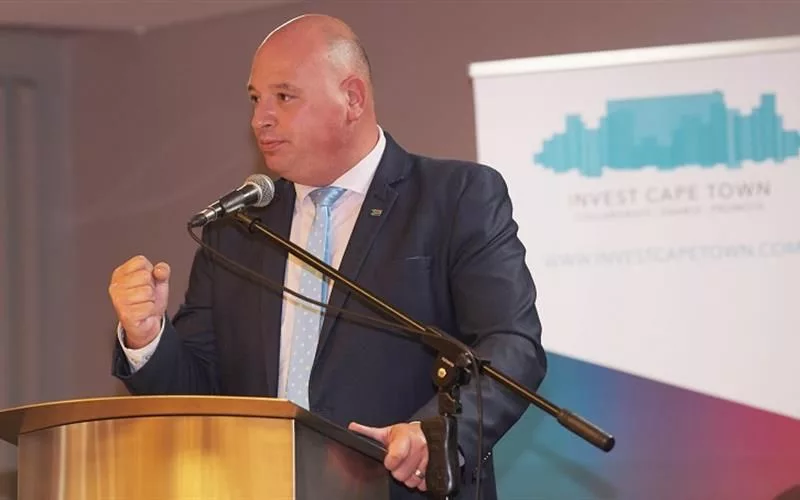The Small Bay sea wall project in Bloubergstrand is an impressive initiative by Cape Town’s Coastal Management Branch to protect critical services and public infrastructures from wave overtopping and floodwaters. The project involves restoring nearby roads and sewer systems, with an expected completion date of September 2024. Though the project may cause some disruption, it is an emblem of progress blending inventive coastal engineering with mindful community engagement.
What is the Small Bay sea wall project in Bloubergstrand?
The Small Bay sea wall project is an innovative coastal engineering initiative driven by the Coastal Management Branch of Cape Town. Its primary objective is to protect critical services and public infrastructures from the damaging effects of wave overtopping and floodwaters. The project involves the restoration of nearby roads and sewer systems, with an anticipated completion date set for September 2024. The project is extensive, encompassing various undertakings such as reconstructing the existing sea wall, rerouting the existing sewer line landward from the park to the De Mist ablution building, and rebuilding Pelegrini and Popham Streets along the sea wall.
A Visionary Coastal Engineering Endeavor
The picturesque locale of Bloubergstrand in Cape Town plays host to the innovative Small Bay sea wall project, a beacon of advanced coastal engineering. This initiative, driven by the Coastal Management Branch of the city, has been gaining momentum since its inception twelve months ago. The project is not just an engineering marvel but also involves the restoration of the nearby road and sewer system, with an anticipated completion date set for September 2024.
At the heart of the project lies its primary objective: to protect critical services and public infrastructures from the damaging effects of wave overtopping and floodwaters. The existing sewer line, which is on the verge of collapse due to coastal activities, is subject to a strategic displacement further inland, away from the sea wall. This plan is indeed a bold venture that harmonizes cutting-edge engineering with vigilant coastal management practices.
The Impact and Project Phases
However, like any significant developmental initiative, the project is bound to cause some disruption. Two integral parts of the project, located in front of Ferguson Street and at the junction of Popham and Pelegrini Street, are slated to kick-off by the end of February. To facilitate the construction of the new sea wall, temporary road closures will be necessary in these areas. The second phase, which is primarily focused on Ferguson Street, is projected to last for five months. Concurrently, the fourth and fifth phases, aimed at the Popham and Pelegrini Street intersection, are expected to extend for seven months.
During these stages of the project, vehicle access to Ferguson and Pelegrini Street will be restricted. Alternative ingress will be provided through Sir David Baird Drive. While pedestrian traffic will be allowed, it will be monitored by on-site staff to guarantee the safety of the residents. As Eddie Andrews, the City’s Deputy Mayor and Mayoral Committee for Spatial Planning and Environment, stated, “We are executing the work in phases to minimize periods of access limitations and traffic disruptions. I recognize that it may cause some discomfort and I am grateful to residents for their patience and cooperation in the upcoming months.”
Reconstruction and Safety Measures
The existing sea wall, which extends from the Small Bay parking along Pelegrini and Popham Streets to Ferguson Street, is subject to a thorough overhaul. The city’s coastal engineers have been meticulous in their effort to build a superior wall that will lessen overtopping volumes and the accompanying risks of damage and safety issues.
As the project moves forward, existing access restrictions are communicated through strategically positioned signage. Currently, both the beach and the adjoining parking area from the Small Bay Park are off-limits to the public. However, residents can still access Pelegrini Street.
Broad Scope and Future Expectations
The project’s scope is extensive, encompassing various undertakings: reconstructing the existing sea wall from Small Bay Park along Pelegrini and Popham Streets to Ferguson Street (spanning an impressive distance of approximately 190 meters), rerouting the existing sewer line landward from the park to the De Mist ablution building, and rebuilding Pelegrini and Popham Streets along the sea wall.
In conclusion, the Small Bay sea wall project fundamentally represents the city’s determination to preserve coastal infrastructure and enhance public safety. It is a powerful emblem of progress, blending inventive coastal engineering with mindful community engagement.
What is the anticipated completion date for the Small Bay sea wall project in Bloubergstrand?
The anticipated completion date for the Small Bay sea wall project in Bloubergstrand is September 2024.
What is the primary objective of the Small Bay sea wall project in Bloubergstrand?
The primary objective of the Small Bay sea wall project in Bloubergstrand is to protect critical services and public infrastructures from the damaging effects of wave overtopping and floodwaters.
What is the expected impact of the Small Bay sea wall project on traffic and pedestrian access in Bloubergstrand?
During the project’s construction phases, vehicle access to Ferguson and Pelegrini Street will be restricted in Bloubergstrand. Alternative ingress will be provided through Sir David Baird Drive. While pedestrian traffic will be allowed, it will be monitored by on-site staff to guarantee the safety of the residents.
What measures are being taken to ensure public safety during the Small Bay sea wall project in Bloubergstrand?
Existing access restrictions are communicated through strategically positioned signage, and both the beach and the adjoining parking area from the Small Bay Park are currently off-limits to the public. However, residents can still access Pelegrini Street.
What is the scope of the Small Bay sea wall project in Bloubergstrand?
The Small Bay sea wall project in Bloubergstrand encompasses various undertakings: reconstructing the existing sea wall from Small Bay Park along Pelegrini and Popham Streets to Ferguson Street, rerouting the existing sewer line landward from the park to the De Mist ablution building, and rebuilding Pelegrini and Popham Streets along the sea wall.
Who is driving the Small Bay sea wall project in Bloubergstrand?
The Small Bay sea wall project in Bloubergstrand is being driven by the Coastal Management Branch of Cape Town.












